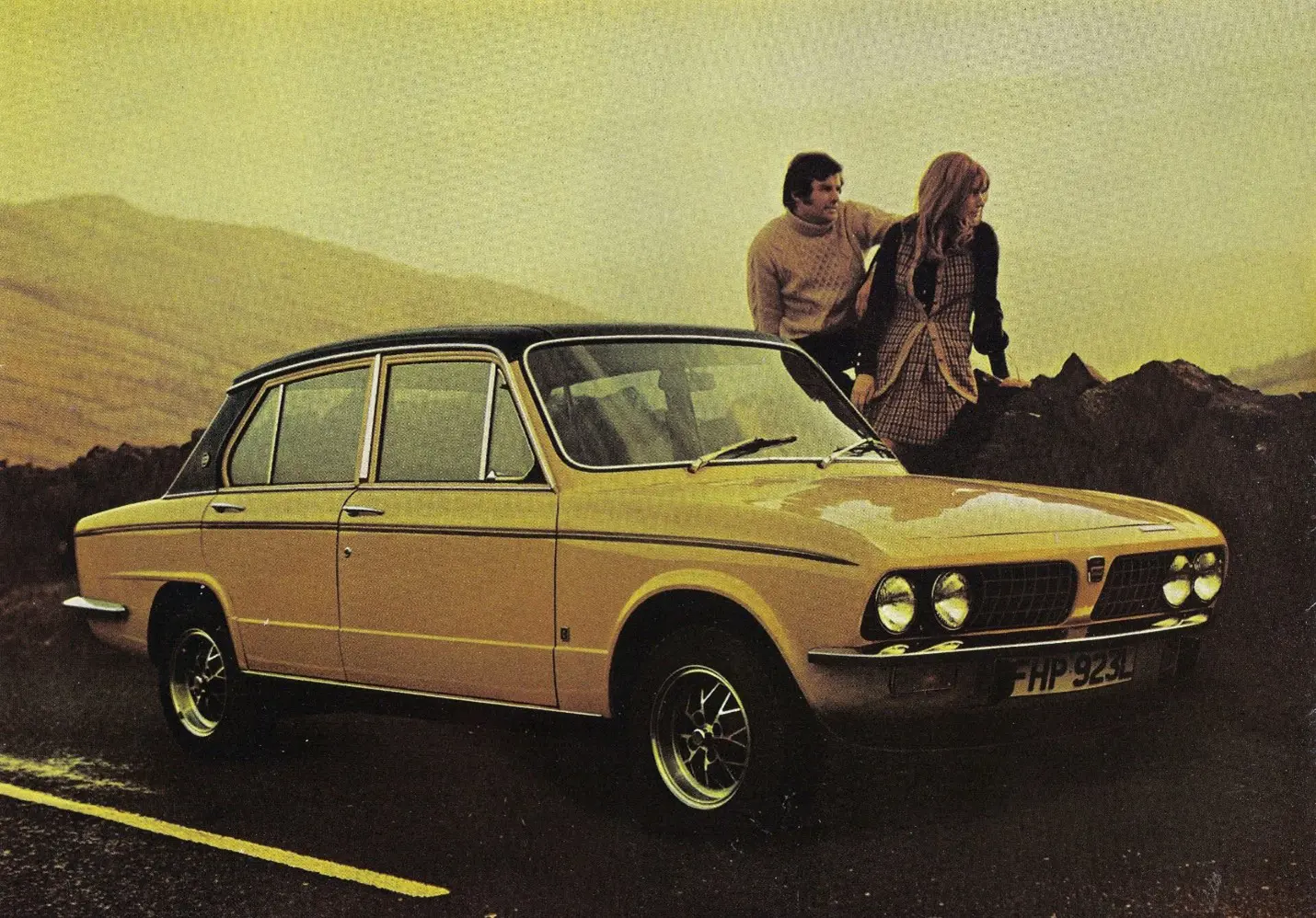The Triumph Dolomite Sprint at 50
26 May 2023
In June of 1973, British Leyland introduced a new model that would, to quote Bill Davis, the Managing Director of their Rover/Triumph division, “dispel the myth that the Continental manufacturers have a virtual monopoly of fast, medium-sized cars”. It was, of course, the Dolomite Sprint.
Triumph launched the Dolomite as the replacement for the Vitesse in 1972, a beguiling combination of the FWD 1500’s bodyshell with Toledo rear suspension and a ‘Slant-4’ engine developed for Saab. Yet motorists craved more performance, and BL planned the Sprint with a twin SU carburettor 1,998cc power plant developed in collaboration with Coventry Climax. To accommodate this new unit, Leyland also upgraded the brakes and transmission.
Your friendly local Triumph dealer would proudly tell you that the Sprint was the world’s first mass-produced car with a multi-valve engine. BL originally intended to call it the ‘135’, reflecting its power output, and made badges in readiness. But, unfortunately, production models varied from 125 bhp to 130 bhp, so Leyland adopted the Sprint name.

Happily, the motoring press positively raved about the new Triumph. Autocar thought it “must be the answer to many people’s prayer” with “quite impeccable’ manners”. Motor Sport observed, “the Dolomite Sprint is a car I liked from the moment I moved out of the office car-park, and it becomes more likeable the further and faster you drive it. There is very little to fault”. Motor found its lines, which dated back to 1965, “a mite old-fashioned with its chunky lines’ but also noted ‘the Dolomite Sprint doesn’t have a rival in sight”.
And the Sprint was a different form of sports saloon to the Escort RS2000 Mk. I and the Avenger Tiger. It looked as distinctive as the Ford and the Hillman with its vinyl roof, front spoiler, twin exhausts, lowered suspension, GKN alloy wheels – another ‘first’ for a British car – and paint finishes. The flagship Dolomite was available in a range of colours usually reserved for Triumph sports cars, and the first 2,000 examples were in eye-catching Mimosa Yellow.
However, the Sprint’s cabin tastefully blended tradition with modernity, reflecting its role as an alternative to the BMW 2002 or Alfa Romeo Alfetta. Rover-Triumph’s sales director Lydon Mills told the press its appeal “has to be wider than the Silverstone crowd”. Thames Television’s Drive In programme -
– concluded that the Sprint “probably represents the best value in sports saloons at the moment”. Meanwhile, Autocar’s review was music to the ears of BL’s directorship:
In terms of maximum speed, the Sprint is more than a match for the Ford Escort RS1600 (113 mph) and the Fiat 132 Special 1800 (102 mph), both of which carry a similar price tag. More significant is its ability to trounce such expensive machinery as the BMW 2002 (107 mph) and Alfa Romeo Alfetta 1800 (110 mph).
The advertising copy boasted the Sprint cost “several hundred pounds less than the comparable imports it outperforms”. Car thought, “As a bargain it ranks almost alongside some of Jaguar’s offerings” and £1,786.84 gained the owner a Triumph with a 16-valve engine, a top speed of 116 mph and 0-60 in 8.7 seconds.
Overdrive and Sundym glass were desirable extras; both were standardised in 1975. The following year saw the Sprint gain head restraints, a laminated windscreen and the option of a limited-slip differential. In competition, Andy Rouse and Tony Dron won the manufacturer’s title in the 1974 British Touring Car Championship, with Rouse’s Triumph winning the 1975 event.
Sadly, by then, the Dolomite range was on borrowed time. BL had cancelled the SD2 replacement, and the Sprint’s last hurrah came in December of 1977 when POK 79 R became the transport for Raymond Doyle in The Professionals. Alas, its time with CI5 was sadly limited to seven episodes as Mark One Productions was already frustrated with BL’s lack of quality. An Escort RS2000 Mk. II replaced the Triumph, which was a great shame; the Sprint helped distract from the first series’ incredibly cheap-looking locations and the ace agent’s Harpo Marx hairstyle.
Dolomite production ceased in August of 1980, and while the 1981 Acclaim was a worthy heir to the 1300, 1500 and 1500HL versions, the Sprint was never to be replaced. To quote the motoring historian Keith Adams, it was “a Q-car supreme that cossetted its owner”. Or, as I once wrote for Classic Cars magazine, it possessed “the ability to sail past your average 1970s GT saloon, leaving its jealous driver to seethe between his sideburns”.
